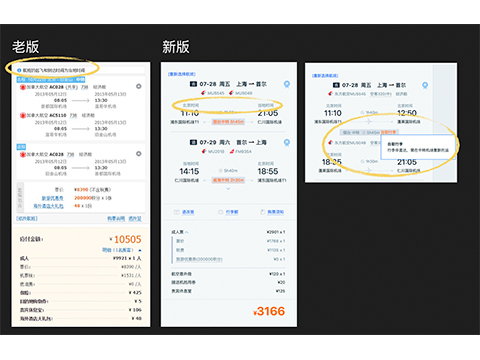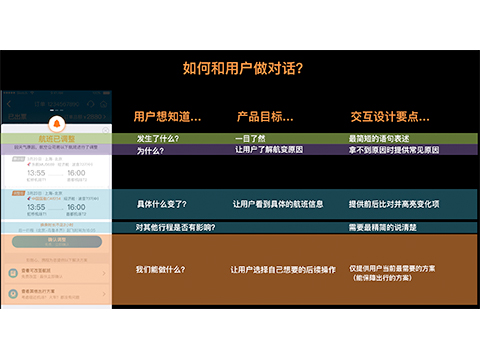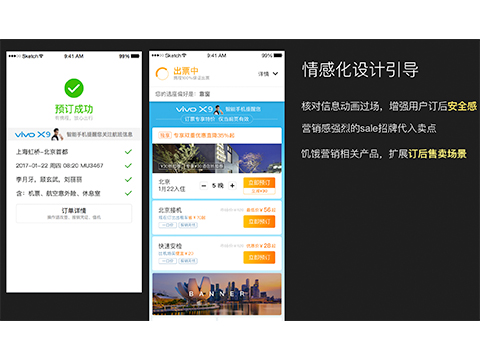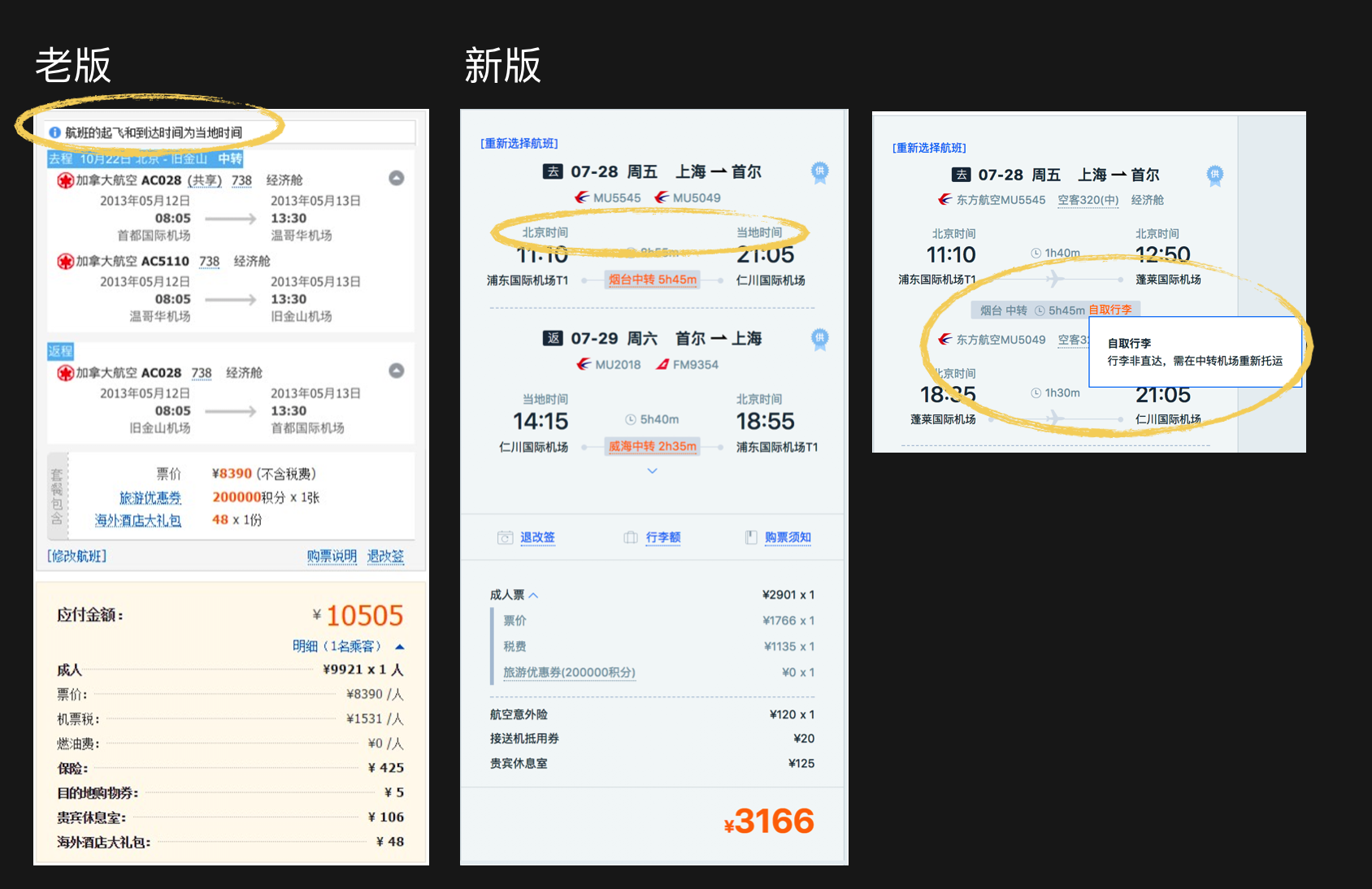-
 Zhang Jin
Ctrip
UED Director of Air Ticket Business Dept.
Zhang Jin
Ctrip
UED Director of Air Ticket Business Dept.
Scenario Design of Interaction
There is no right or wrong in design, but design has its applicability.If interactive designers cannot analyze or interpret from the whole task flow, users are likely to encounter information fault in the whole process and only stack and list functions, then the charm of interaction will be lost. By contrast, real interaction cannot be separated from scenes, and a real scene not only has the context of the process, but also users' emotions, products' own appeal, and users' possible time breakpoints in the process.
A scenarized design idea requires interactive designers to present the real scene of schemes and complete the effective communication with users within the effective time; well guide and accept or reject virtual scenes so that users can achieve their goal identification and bring themselves into the scene in the virtual scene. Our daily work can't be separated from data, and a new design idea will be tested quickly online through AB experiment (which can be accurate to our target groups and scenes), so the scenarized design idea will be more targeted.
This workshop will introduce the process of scenarized design through cases:
1. Set up scenes.
Build a virtual scene growing out of nothing by considering business appeals and the user mind model.
2. Have dialogues with users in the scene.
2.1 What to say, understand the user mind model with empathy
2.2 How to say, balance between complexity and simplicity
2.3 How to say, tradition and innovation
3. Analysis and prediction.
Users' usability issues
We have a large number of experiments that only change the copy writings or presentation forms to get very high cost-effective benefits, which can't be separated from the effective judgment of scenes. At the same time, for users' usability issues, we will analyze and predict by listening to customer services, test ideas in the schemes, verify the feasibility of our schemes by reducing the ratio of incoming calls, and accumulate a lot of actual combat experiences as well. For instance, the transmission of information after flight change, the notification risk of booking for complex voyages, and the transmission of additional product value.
1. Background introduction of the workshop
2. Introduce scenarized design theories by sharing cases
3. Give multiple optional topics for group discussion, and test the schemes according to this set of design theories
4. Sharing and discussion
1. Interactive designers
2. Product staff of the entrepreneurial team
3. User experience engineers
1. Understand the application of scenarized design ideas in the practices of interactive design;
2. Learn about how a utility-class and low-frequency Internet product does its service experiences;
3. How to prevent interaction from becoming a paranoid-type function;
-
 张晶 - 信息的复杂与简单如何权衡
张晶 - 信息的复杂与简单如何权衡
-
 张晶 - 真实场景的信息架构重塑,有效利用首屏空间
张晶 - 真实场景的信息架构重塑,有效利用首屏空间
-
 张晶 - 如何处理场景中的用户情绪
张晶 - 如何处理场景中的用户情绪
-
 张晶 - 如何进行和用户的有效对话
张晶 - 如何进行和用户的有效对话
-
 张晶 - 预订完成页的场景重建
张晶 - 预订完成页的场景重建













